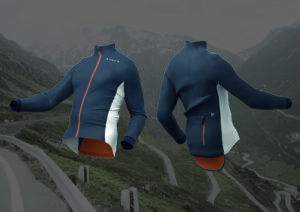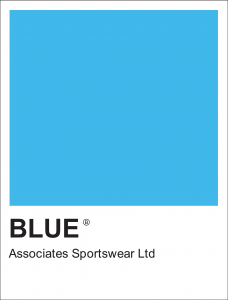Designing sportswear involves a blend of functionality, aesthetics, and innovation to create garments that meet athletes’ needs while being visually appealing. Before style is even considered, the performance element needs to be addressed to make sure the garments will function as required by the athlete.
Below is a review on what is involved in designing performance sportswear.

Research and Inspiration
Understand the Athlete: Study the target audience and understand their sport, body movements, and requirements. Consider factors like breathability, flexibility, and durability.
If you don’t understand any element, then either ask athletes about this or try the sport yourself so you have first-hand experience in what you may need from the garment in terms of performance.
Only when you truly understand the needs of the athlete and also the weather conditions the garments will be worn in, can you start to think about fabrics, features, fit and function.
Trend Analysis: Research current trends in sportswear, including colours, patterns, materials, and technological advancements.
There are several trend predictors you can tap into to find out what the latest and upcoming trends are and then see if these would sit well with your target market. Don’t be drawn in too much by trend though, as your target market may not be influenced by trends or fashion when they purchase performance sportswear and are more drawn towards function, performance and features.
Sportswear is commonly used for several years and therefore many consumers purchase classic colours and designs that won’t date the piece.
Gather Inspiration: Draw inspiration from various sources such as nature, urban landscapes, cultural elements, and even futuristic concepts.
Again, think about the end consumer and what might trigger them to find your products appealing. Understanding the consumer in terms of demographic, age, taste, spending power etc will influence your inspiration.
Conceptualisation
Brainstorming: Ideate and sketch initial concepts. Consider innovative features that could enhance performance.
If you are creating something unique, you may want to produce rough sketches and mock ups of the features to work these out before you start to create detailed cads.
Mood Board Creation: Compile images, fabrics, colours, and textures that reflect the envisioned design direction.
Also have your target consumer on the mood board and include other brands they may like, These brands could be sportswear brands, however it’s also important to include brands outside of sportswear so you get a complete picture of their taste.
Think about these aspects of your target consumer.
- What car do they drive?
- What phone do they use?
- What furniture do they buy?
- What food chains do they eat in?
- Which brand of supermarket would they choose?
- What would they wear to work?
Building a picture of the target consumer will help to determine the look and feel of the sportswear you will be designing.
Design Development
Material Selection: Choose performance-oriented fabrics—moisture-wicking, breathable, stretchable—for different parts of the garment.
This is probably the most important part of the process. The fabric brings most of the performance to the garment and if you get this wrong, the athlete won’t feel comfortable which will hinder their performance when they do their sport.
Ultimately you are trying to produce a garment where the wearer doesn’t feel the garment. It becomes invisible to them so they can focus on their own performance. It needs to stretch, fi, breathe and protect from the elements without them noticing any issues.
You also need to select a fabric that is right for your budget. No point selecting an expensive fabric if it means you have then priced yourself out of your target markets price bracket.
Remember, you get what you pay for, so selecting a cheap fabric won’t last or perform as well as higher prices materials.
Understanding yarn and how they perform is key too. Blending yarns often improves the fabrics performance and if you are unsure of what is right, then seek advice.
Our fabric guide may be useful here.
If you are looking for sustainable fibres, then our guide on sustainable fabrics might be worth a look.
Silhouette Design: Draft initial garment shapes and silhouettes based on the athlete’s needs and the sport’s requirements.
Think about drag and comfort. Where might the garment need to be tight fitting and where it might need to be loose.
Technical CAD Drawings and TECH PACKS: Create detailed technical sketches with measurements, stitching details, and material callouts for prototypes.
All factories will need precise CAD drawings so that they understand what the garment looks like and how to make it. Include a front and back view with all trims and stitch types to be shown clearly.
A detailed tech pack then needs to be created including fully graded size chart, BOM, trims to scale and detailed close ups on all features and construction.
You will need to nominate all the fabrics and trims and remember, a factory is like a builder of a house, don’t leave it up to the factory to select trims and fabrics in the same way you wouldn’t let a builder select a front door or the tiles in your bathroom.
See out Tech Pack Guide for more information.
Prototype Development: Use 3D modelling software or create physical prototypes to test functionality and fit.
You might want to create mock ups of details to share with your factory to save them getting it wrong.
Always produce the samples in the factory that will make the bulk production. Don’t ever use sample houses as they will charge a fortune and won’t have the same machines as the bulk production factory. In our experience, clients that have used sample houses end up with awful quality samples that are useless in terms of stitching, fabric or production engineering.
Incorporating Technology
Smart Fabrics: Explore incorporating technology like sensors for tracking biometrics, temperature-regulating materials, or anti-microbial treatments.
Sustainable Materials: Consider eco-friendly options like recycled fabrics or those made from renewable sources. The world is slowly waking up to non-sustainable fabrics and you may gain more sales and love for your brand if you are environmentally responsible in your fabric choices.
Testing and Refinement
Fit Testing: Engage athletes for fit testing to ensure comfort, flexibility, and movement without restrictions.
You will also need to fit these on an average sized model and make sure you keep this consistent. Don’t fit on several models as were all built slightly differently.
Ideally you would book a “Fitting Model” who fits garments for a living. It’s their job to maintain their size.
Performance Testing: Evaluate the garment’s performance in real-world conditions or controlled environments to validate its functionality.
Think about durability too and ask the fabric mills for the quality and performance tests they may have concluded on the fabrics you select.
Feedback Integration: Gather feedback from testers and make necessary adjustments for improvement. This isn’t essential and should only take days or sometimes hours. An athlete will know within hours if a garment works or doesn’t.
Detailing and Branding
Graphics and Logos: Design visually appealing logos or graphics that resonate with the brand and sport’s aesthetics. Think about how they will be applied to the garment as this might drive the overall look of the branding.
Think about where this might be placed on the garments and what scale they will be used in. This might differ between men’s and ladies options.
Colour Palette Selection: Choose colours that enhance visibility, align with brand identity, and complement the design. Again, use your mood board you have created and think about what your consumer buys and might like, This isn’t about what you like.
Trim and Embellishments: Incorporate reflective elements, zippers, or other details that enhance both aesthetics and functionality. These trims need to be developed by a specialist garment trim supplier. Don’t let the factory make these as you cannot then manage quality assurance.
See our TRIM PACK here for more details.
Production Preparation
Tech Packs: Update your detailed tech packs with all specifications, including materials, measurements, trims, and assembly instructions after each sample round. Keeping this updated helps the factory but also keeps the tech pack up to date for the next production round or if you decide to switch to a different factory in the future.
Supplier Selection: Identify and collaborate with reliable suppliers who can provide high-quality production standards and hit deadlines.
It can be quite a mind field out there and so many factories claim to make for big brands and advertise that they do this. Take this with a huge pinch of salt as most quality factories are under contract NOT to promote they make for them.
If you are struggling to find a factory, check out our FIND A FACTORY pack here.
Ethical and Regulatory Considerations
Ethical Sourcing: Ensure the supply chain adheres to ethical and fair labour practices. They should have an audit in place. Ask for a copy.
Compliance and Safety: Comply with industry regulations and safety standards for sportswear production. Again, an audit should be in place.
If you would like more information or you require some assistance with your sportswear designs, then we have a team of in-house, qualified and experienced sportswear designers that can help. Ask for a free quote




